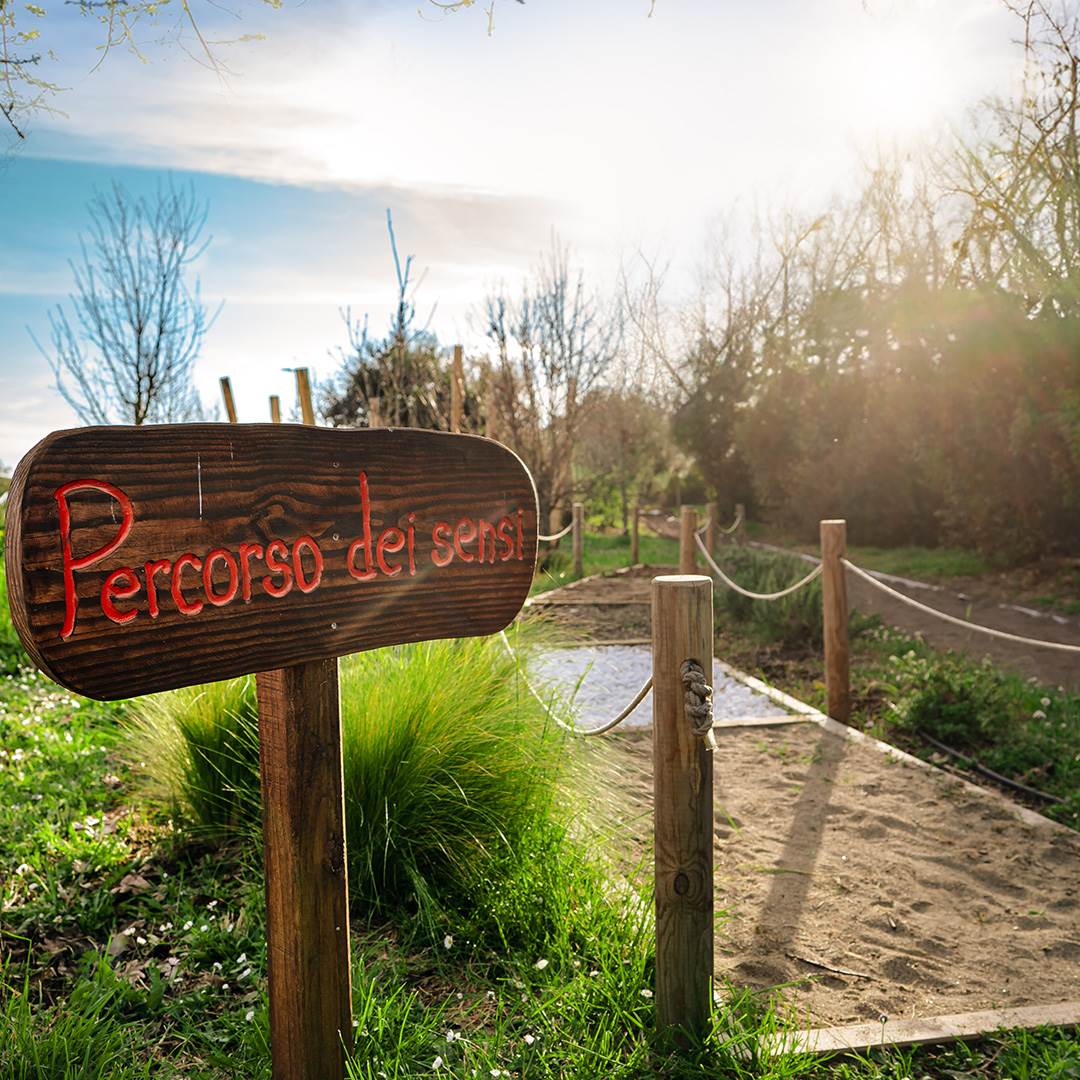


THE MEDITERRANEAN FOREST
A wonder-filled route will reveal the secrets of the Mediterranean forest. It has 3 types of trails:
- an ascent to the pond and flooded grasslands (400 m, 8 min)
- an ascent to the honey-plant maze (700 m, 8 min)
- an ascent to the ‘La Fenice’ oak tree (1 km, 20 min)
Mediterranean forests or Mediterranean woods occupy a large part of the coast of the peninsula, covering more of the hinterland proceeding towards southern Italy. In this unique ecosystem, mild winters and little, irregular rain are two factors that have made these areas ideal for tree and shrub species with small, leathery leaves, covered in wax and fuzz to limit the evapotranspiration of water.
The trees are generally evergreens, such as holm oaks (Quercus ilex), which can become so dominant that they form a forest, as can be seen in the nearby WWF Oasis of Macchiagrande on the coast of Lazio. Cork oaks (Quercus suber), with their unmistakable bark, are less common. Two other kinds of deciduous oaks with an imposing appearance are more common: the English oak (Quercus robur), with its almost absent petiole, and the downy oak or Italian oak (Quercus pubescens), which keeps its dry leaves on its branches until new buds form. Among the shrubs, the ones that act as food for a good part of the wild fauna are the strawberry tree (Arbutus unedo), the common hawthorn (Crataegus monogyna), and the elmleaf blackberry (Rubus ulmifolius). The latter also plays a role in protecting acorns until new seedlings germinate. In the Mediterranean forest, you might spot birds such as the common blackbird (Turdus merula), the European green woodpecker (Picus viridis), the great spotted woodpecker (Dendrocopos major), or even the Eurasian jay (Garrulus glandarius). Small mammals like the hedgehog (Erinaceus europaeus), the European pine marten (Martes martes), and the Beech marten (Martes foina) find shelter in this evergreen forest, as do crested porcupines (Hystrix cristata) and foxes (Vulpes vulpes), who create dens in tree roots.
Plan your visit before you go, choosing a route suitable to your experience level and follow always the yellow path: check the length, the climb, and the difficulty of each path. Tell someone about your itinerary and what time you expect to return. Charge your mobile telephone, but remember that sometimes you won’t get reception!
And, if you want to book a guided tour, write to oasi.castelromano@mcarthurglen.com
Read next





